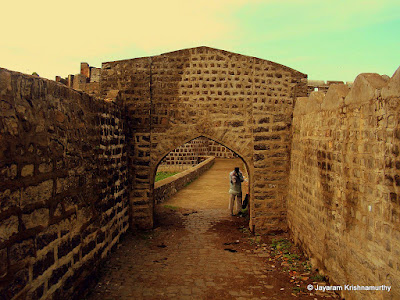Location : Ausa , Latur district
Type: Land fort
Route(s) :
1. Latur - Ausa (20 kms)
2. Pune - Tembhurni - Kurduwadi - Barshi - Osmanabad - Tuljapur - Ausa (365 kms)
3. Pune - Latur - Ausa (344 kms)
4. Pune - Solapur - Ausa (353 kms)
After Udgir we started for Ausa fort , the last fort of the trek. Ausa is located about 20 kms from Latur on the Latur-Solapur highway. We reached the fort in about 2 hours from Udgir with a lunch break in between.
This fort is also under the control of the ASI and is open from 9am to 5pm. Photos are not allowed , but you can prove to them that this wont make it to some press news , usually the guards allow to take photos.
The fort has some outer walls and entrances. The fort is basically built in a depression (khandak). There are a lot of structures on the fort and cannons on the fort. The inner part of the fort is converted into a garden. There is a huge well in between the fort and has a lot of water and water channels underneath. We could even heard the sound of peacocks inside the shrubs in the fort but couldn't see any of them. The walls and bastions of the fort are crumbling due to tree growth but the ASI is trying to restore them. Most of the structures are crumbling and may fall down soon. There are lot of cannon balls too kept inside one of the entrances.
There is no specific recorded history of the fort.
The main entrance door of Ausa fort

Seal of British Empire on a cannon

Expanse of the Ausa fort

One of the entrances of the Ausa fort

One of the cannons in Ausa fort

Firing line of cannons just ahead of an entrance door

Crumbling bastions and walls of the Ausa Fort

Lots of cannon balls in the fort



































